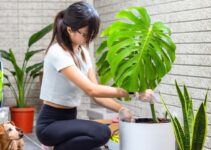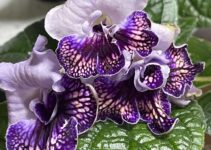
When you like plants and do not receive enough natural sunlight in the house, indoor plant grow lights may become your savior.
Now, we will discuss the functioning of these lights, which lights should be purchased, and how to properly use the lights in the indoor garden.
Why You Need Grow Lights Indoors
Indoor plant grow lights can vastly change your home in case it does not receive enough direct light. They are made to replicate the spectrum of light which the plants absorb in the sun
You can use them for:
Planting herbs at your kitchen counter.
Preserving greenery in winter.
Starting seedlings before spring.
How Indoor Plant Grow Lights Actually Work
The grow lights of indoor plants operate on the basis of producing blue and red light, which are primarily the colors that the plants utilize in photosynthesis.
Blue light enhances growth of leaves and stems.
Red light promotes blooming and fruiting.
Most of the indoor plant LED grow lights will mix these colours into a complete spectrum of light that seems to be very natural sunlight.
Growing succulents, basil or even small flowering plants, no matter the case, these lights provide it with precisely what it requires.
Different Types of Grow Lights for Indoor Plants
There are various Grow Lights that can be used in indoor plants. Before you purchase one, it is a good idea to know what you have to choose:
LED Grow Lights
LED grow lights are the most popular, energy-efficient, long-lasting, and available in different shapes.
Best for: small apartments, beginners and non-flowering house plants.
Fluorescent Grow Lights
Fluorescent lights (such as T5 tubes) are suitable in the cultivation of herbs or the germination of seeds. They are inexpensive and offer soft and balanced light.
Best for: small areas, kitchen gardens, and racks mounted on the wall.
HID (High-Intensity Discharge) Lights.
These are robust and vigorous lights commonly utilized by severe indoor cultivators or business cultivators.
Best for: large home gardens or commercial planting.
Choosing the Best Grow Lights for Indoor Plants
The following are some of the points to consider when shopping:
Full-spectrum lighting: Find the lights with red and blue colour.
Area size: Before purchasing, measure your area, you do not want the light to be uneven.
Power consumption: LED lights in growth save the most power.
Portability: Adjustable stands or clips on models are ideal at home.
Inbuilt timers: Useful in automating the use of light (12-16 hours of light in a day).
Tips for Using Grow Lights Indoors
Correct positioning of grow lights indoor plants is the key to success.
- Maintain the lights at 12- 24 inches over your plants.
- Have them running 12-16 hours a day, and then switch them off to allow plants to rest.
- Turn your pots after every few days to achieve even growth.
- Be careful of signs of stress – when the leaves are curled or faded, the light may be too near.
Innovative Uses of Grow Lights.
You can incorporate them into your household.
- Hang pendant-style indoor plants grow lights above your dining table for a cozy vibe.
- Cut LED light strips and place them under shelves in order to illuminate potted greens.
- Set up a mini plant area with standing grow light and some ferns or orchids.
- The lights do not just benefit your plants, they also provide a beautiful glow to your house.
Final Thoughts
When you have the right grow lights to use with your indoor plants, you can have a full year of the green space and this is even in rooms where the amount of sunlight is minimal.
They are cost-effective, efficient in energy consumption and surprisingly fashionable when adapted right. And thus, regardless of whether you are planting herbs, succulents or tropical greens, a bit of artificial sunshine can help your plants to appear happiest.
It deserves your indoor garden! you will enjoy the difference a soft, healthy radiance will make in your home.
FAQs
Q1. Is it possible to use any LED light to light up plants?
Not quite. Ordinary LED bulbs are not complete spectrum as needed by plants. It is always best to use lights that are used in plants.
Q2. What is the duration of light time on grow lights?
An average day of light exposure to indoor plants is 12-16 hours, and a few hours of dark to rest.
Q3. What is the most popular kind of grow light beginner?
Full spectrum LED grow lights are best, they are cheap, durable and easy to control.
Q4. Is it possible that grow lights can substitute the sun?
Yes! Most of the indoor plants can be used in place of natural sunlight with a good quality LED grow light.


